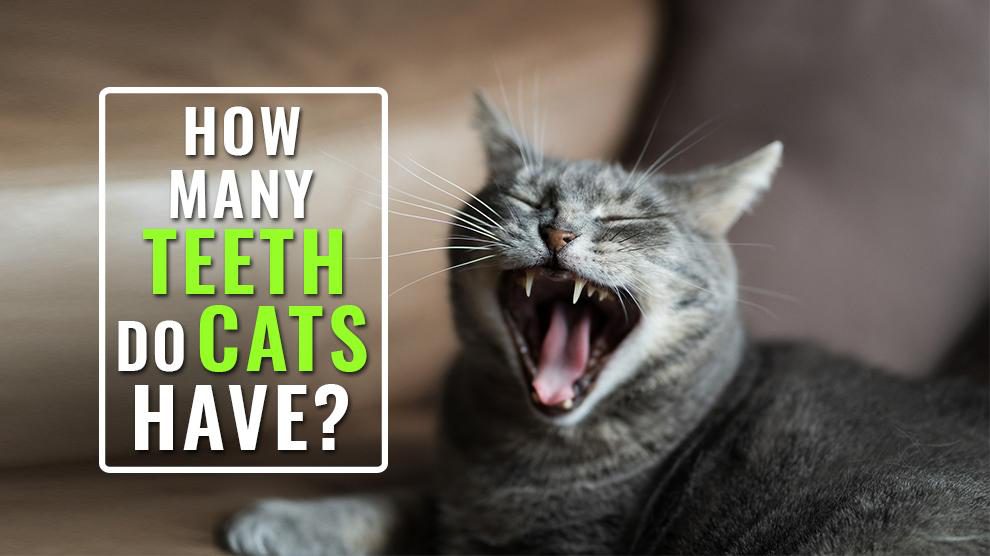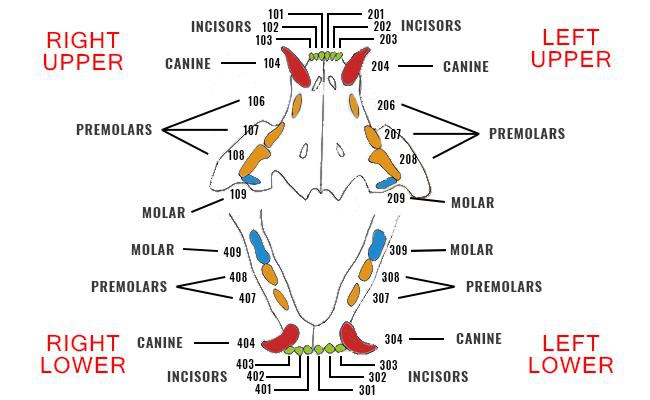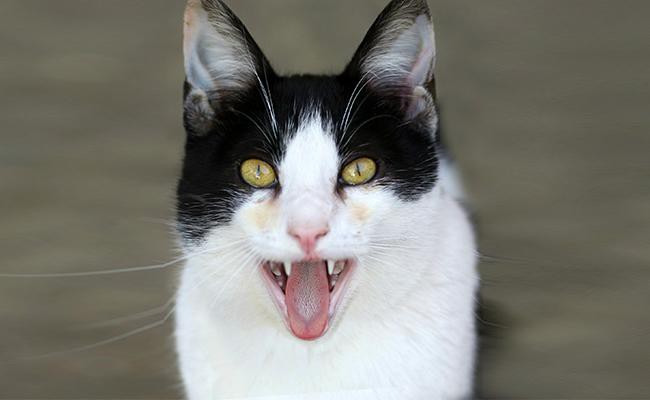Cat Pregnancy Calculator And Timeline
Cats have around 30 teeth. Felines are much more like humans. The fluffy white kitties begin their adventurous life with deciduous “milk teeth.”
They are soon replaced by adult-caliber teeth. Adult cats end up with thirty teeth. Cats have four sharp large canines. The rest of the teeth are teeny tiny.
The inside of your pet cat’s mouth is a big mystery. Let’s learn more about your cat’s teeth in detail.
Are Cats Teeth Crucial?
For both wild and domestic cats, it is crucial. Let’s understand the reason why it’s important –
- Lethal weapons – Felines teeth are used to eat or kill prey. It is used for self-defense.
- Mastication – This process means “chewing food” which lubricates or softens food for swallowing. It then breaks the food down for digestion.
- Prehension grasp – Gobbling the food using their tongue or paws.
Cat Teeth Chart
Your feline’s teeth play a major role. Let’s understand what’s inside a cat mouth.
The Breakup Of 30 Adult Cat Teeth
- 4 molars
- 10 pre-molars
- 4 “fangs”
- 12 incisors (front part)
Both humans and cat will go through the teething process.
Most cat lovers are of the opinion that teething happens when baby teeth fall out. The right answer is when the kitten’s milk teeth are emerging.
1. Incisors

These teeth are used for holding the prey or for grooming purpose. These teeth are smaller in size and sit right well in front, between the canines.
Under normal circumstances, there are 12 incisors, both 6 on bottom and 6 on top.
With age, these are subject to wear and tear and may fall out.
2. Canines

They are used for cutting and shredding prey. These “fangs” are sharp and powerful. There are four canines. Two canines on the bottom and two canines on the top.
Canines are rooted and held in place with the support of ligaments with a single long root. They are supported by strong and deep ligaments.
3. Pre-Molars

These teeth start to erupt after the canines and incisors. Pre-molars are preferred for slicing the prey or the flesh. Every cat should have four pre-molars in the lower jaw and 6 in the upper.
These teeth have strong various roots. It means they are hard to extract. The presence of many roots makes it hard.
If roots are not completely removed, this can cause more problems.
4. Molars

Every cat has four molars. With two on the upper jaw, and two on the lower jaw. These molars are useful in cutting through bone and meat.
When diseased, these teeth are simple to remove. Lower molars are hard to remove. The reason is they have one small and one thick root with ligament and bone attachment.
Cat Teeth Cleaning
Cat Teeth Cleaning Cost
The normal price of vet teeth cleaning is $400-$800 USD.
The price depends on things such as anesthesia, the type of teeth, and the blood work involved. Depending on the location, the cost varies.
Cat Teeth Cleaning Problems
Cats use their teeth for a lot of things.
They are used for plenty of normal tasks and it includes –
- Grooming
- Defense
- Play
- Hunting
- Eating
With time, cats can develop many health problems including canine periodontal disease. Inflammation of the skin tissues surrounding the teeth.
This can cause behavioral problems –
- Irritated or withdrawn
- Drooling
- Upset stomach
- Loss of hunger or appetite
- Eating less
- Mouth sensitivity
- Pus formation
- Yellow deposits
- Difficult eating
- Oral pain
- Missing or loose teeth
- Bleeding, swollen, or red gums
- Bad breath
Kitten Teething
As you know, kittens are born without teeth.
Different stages of kitten teething
- Deciduous teeth (milk teeth)
- The eruption of permanent teeth
| Age | Kitten Teeth Eruption Chart |
|---|---|
| 1-2 weeks | Baby teeth eruption |
| After 6 weeks | 26 baby teeth |
| Between 4 to 5 months | Baby teeth falling |
| After 6 months | Eruption of 30 adult teeth |
Kitten Teething Symptoms
During the first stage, you will see these changes –
- Abnormal behavior – Due to the oral problem, you may find your cat irritable or restless. Some kittens become lazy and dull too.
- Whining – The cat could start meowing because of pain. This happens when the teeth push through the gums.
- Gnawing – Loose teeth, irritating and itchy gums are the signs of teeth eruption. They will have the urge and energy to gnaw on stuff like electrical wires, furniture, shoes, or toys.
- Loss of hunger – If your cat chews slower or avoid food, it could be due to teething
- Drooling – Some cats are excessive droolers.
- Bad breath – This is a common problem associated with teething.
- Missing tooth – Finding sharp kitten teeth is a good sign.
- Inflamed gums – Gums appear tender and soft when new teeth erupt. Loose teeth can cause undue pain to your cat.
Do Kittens Bite While Teething?
Teething kittens will gnaw or bite on anything. Never use force on your cat.
Do Kitten Teeth Fall Out?
Kittens also lose their baby teeth as humans before the sixth month. All the thirty teeth (molar, premolar, incisors, and canines) develop by the time they are 6 months old. The teeth of an adult cat are permanent and they do not lose any of them without reason.
Generally, adult cats lose teeth because of periodontal gum disease. Gum plaque is also another problem. When plaque forms up along the gum line, the teeth loosen up and fall out. Older cats above six years are at risk. Teeth cleaning at regular intervals prevents these problems.
Periodontal Disease In Cats
Why periodontal disease occurs in cats?
Periodontal disease happens due to several reasons. It’s like humans, you have plaque.
If a cat owner refuses or finds no time to clean, they will likely incur gingivitis. Inflammation of the gums.
If gingivitis gets worse, the periodontal disease sets in. Simple.
Pain conditions
- Oral abscesses – Infection of the root
- Osteomyelitis – Infection of your feline’s jawbone
- Loss of bone
- Receding Gums
Tooth Resorption Cats
This condition is also called FORLs or Feline Oral Resorptive Lesions. FORLs is a very painful dental problem in cats.
This is one of the most popular problems of tooth loss.
They almost resemble teeth cavities but the cat reabsorbs the tooth. With time, the cat will suffer from tooth sensitivity to both cold and hot.
Your vet should diagnose these problems and vets may ask for an x-ray report.
In most cases, teeth extraction is the only possible option available to the vet.
Dental problems can increase the stress levels of your cat. Vets claim cat’s six years or more are susceptible to this condition.
Regular health checkups will reduce several dental problems.
Braces For Cats
Cat’s wear braces to help manage oral malformations. Canine projection is one such malformation.
They can get these braces to manage posterior crossbite. This happens when your feline’s premolar teeth succeed the upper teeth.
Wry bite or mouth is when cats have one part of the jaw than the other. This will definitely make hard for cats.
Braces are used for life-saving procedures.
Do Cats Get Cavities?
Cats do not get cavities as humans do. They suffer from dental issues or tooth resorption.
These conditions are actually quite rare in cats.
Cat Teeth Falling Out – Important Measures
Your pet cat may lose teeth due to several things ranging from dental diseases to old age. Kittens undergoing eruption will face teeth fallout issue to a large extent.
Common places to find your cat’s lost little teeth
- Dangling from your kitten’s mouth
- Most kittens may swallow
- In eating areas
- Stuck in cat’s toys
- On the floor
- Kitten’s bedding
Do Cats Regrow Teeth?
Once the cat loses its adult tooth, it won’t grow again. Once it’s gone, it is gone for good. It is better not to neglect the dental issues of your feline.
Recovery After Cat Tooth Extraction
The cat’s mouth will become very soft after tooth extraction. If the vet removes more than one tooth at a time, you have to take extra care. Give him soft food, as they are easier on the gums. However, if your cat eats only dry kibble, do not worry, as they will be okay with it.
How to Brush Your Cat’s Teeth?
You have to keep your kitten clean to make him happy. If you can, start brushing your cat’s teeth as soon as you bring them home.
Some people prefer –
- Chew toys that are approved by the VOHC. They help to fight tartar.
- Antimicrobial or mouthwash
- Dental wipes
You should check your cat for plaque or red gums build up. If required, take your cat for a vet visit yearly once.
Do Cats Bite?
When a cats teeth puncture your skin, it transmits a lot of bacteria. Even after the wound heals, the bacteria is still trapped inside.
Seek medical attention when a cat scratches or bites you.
















